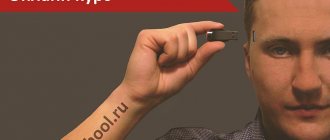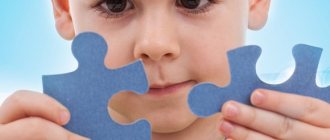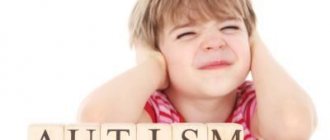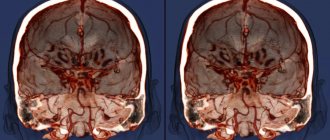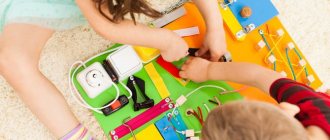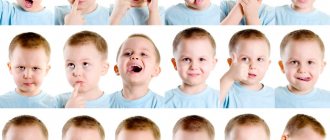Olga Tkatskaya
Games-activities for the development of fine motor skills in children with severe cerebral palsy
Games and activities are intended for teachers of inpatient social service institutions working with children with SMDD; parents.
The classes are aimed at developing fine motor skills in children with cerebral palsy .
The purpose of these games is to introduce teachers and parents to work on the development of motor skills , which ultimately affects the development of speech and thinking .
Fingers.
Progress of the lesson.
1. Massage the hands and fingers with walnuts.
Rolling one palm of the hand over the other from the back and inside, squeezing the nut in the palm with all fingers, rolling the nut between the fingers.
I'm rolling my nut
To become rounder than everyone else.
Dry sand games.
Pour dry sand into a container in a layer of 7–10 cm. Invite the child to play with the sand. Take sand in your hands, pour it through your fingers, and knead it with your fingers.
The child claps his palms on the sand, moves his fingers, sticks his fingers into the sand, “drowns”
hands in the sand.
We take a strainer from the kit and sow sand through it. We collect sand in containers and pour it out.
Then the teacher buries small toys in the sand and invites the child to find them.
3. Bottom line.
- How interesting it is to play with sand, did you like it?
Jars.
Goals.
1. Formation of manual skills in unscrewing and tightening the lids of jars.
2. Correction of hand-eye coordination based on practical actions with objects.
3. Cultivate patience.
Materials: 3-4 different jars of cosmetics with different items inside: button, pebble, nut, candy.
The game is the best assistant in teaching children with cerebral palsy at home.
A popular type of game is “What’s extra”
on logic and attention, development of thinking. The child is asked to look at pictures with objects, one of which is redundant. (For example, a vegetable from a fruit, an insect from a bird). The older the player, the more difficult the task.
Toys for children with cerebral palsy
A toy that a child with cerebral palsy holds in his hands should be interesting to him and appropriate for his age. It should be remembered that abilities often depend on the form of the disease more than on age.
Toys can be ordinary objects that are found in every home. When choosing, it is important to pay attention to:
- ability to use hands;
- degree of ability to concentrate;
- the child’s degree of understanding of the language.
Don't forget that classes can be done with objects that are around in every home. Household items can help you organize your play time.
In classes with children who have been diagnosed with cerebral palsy, regularity is important - this is one of the main conditions for successful development. But even with the correct organization of time, it should be remembered that playing is a type of activity that should not be forced. It is designed to bring the child joy and desire to achieve success.
It is very important to make the child want to play with the objects and toys around him. To do this, you need to create a positive attitude in him, demonstrating through your behavior how interesting all the objects and toys are, and how interesting it is to play with them. Games with children should be carried out systematically, using all free time for this. Even before bedtime, a child, for example, can, with the help of an adult, put his doll to sleep, having first washed it and dressed it in nightwear.
You can learn to handle objects and toys with the help of: joint actions, when an adult controls the child’s hand; actions of imitation, when a child repeats the actions of an adult; actions according to the model, when the child reproduces the entire chain of actions performed by the adult.
The content of children's first story games is the activities of the people with whom he directly meets. In order for a child to be able to portray her in his games, he must have the necessary knowledge and skills. And here parents can play a big role in the formation of this knowledge. Thus, to display everyday scenes, the child must have self-service skills. To wash the doll, he needs to learn to wash his hands and face. When communicating with a child, it is necessary to draw his attention to how actions that are repeated many times during the day are performed: washing, undressing and dressing, eating, etc., and give the child the opportunity to perform them independently, even if they are not very good at it works out. After this, similar actions can be performed with the doll (dress the doll for a walk, undress the doll, feed and put the doll in the crib to sleep).
Progress of the lesson.
1. Massage of hands and fingers.
One, two, three, four (Children clench and unclench their fists.)
We washed the dishes. (Rub one palm against the other.)
Teapot, cup, ladle, spoon
And a big ladle. (Bend your fingers, starting with the big toe.)
We washed the dishes, (Again he rubs one palm against the other.)
We just broke the cup, (Bend the fingers, starting with the little finger.)
The ladle also fell apart ,
The teapot's nose is broken,
We broke the spoon a little. (Clench and unclench their fists.)
So we washed the dishes.
Goals.
1. Stimulation of kinesthetic sensations and development based on finger touch.
2. Correction of hand-eye coordination based on practical actions.
3. Cultivate interest in a new type of activity.
Materials: a container with warm water 15–20 cm high, small pebbles, shells, fish toys.
Exercise therapy for cerebral palsy: a set of exercises
Exercise therapy complexes for cerebral palsy are developed for patients at the Yusupov Hospital Rehabilitation Center, taking into account individual characteristics. However, each set of exercises for the rehabilitation of children with cerebral palsy includes the following exercises:
- to stimulate activity;
- to improve movement dynamics;
- to relax muscles;
- exercises in positions: sitting, lying down;
- to reduce primitive reflexes;
- exercises for tactile and visual sensations. Children with this diagnosis have a lack of perceptual power;
- exercises to normalize breathing;
- activities in a playful way.
Exercise therapy for cerebral palsy must be carried out for several years to obtain positive results. When parents turn to specialists in a timely manner, the chance for a good future increases significantly.
At the Yusupov Physical Therapy Hospital, instructors explain to parents the purpose and objectives of rehabilitation, and the effectiveness of certain exercises included in the complex. When contacting the Yusupov Hospital, parents can receive psychological help and, as part of rehabilitation, learn the basics of interaction with children.
Progress of the lesson.
1. Massage of hands and fingers.
"Pickling cabbage"
We chop the cabbage, chop it, (With the edge of one hand we tap the back of the palm of the other hand.)
We three carrots, three, (Rub the bones of the bent fingers into the palm.)
And now we salt, salt, (Imitate sprinkling salt.)
We press well, we press. (Clench and unclench your fingers.)
2. Finger painting.
The teacher shows the child a pot with a flower.
- Look, the flower’s head is down. He's probably thirsty. I need to water the flower. But as? From a watering can.
The teacher takes a toy watering can and waters the indoor flower.
— Water flows from the watering can like rain. And in this picture the flower also drooped, lowered its head, probably no one had watered it for a long time. Let's draw rain in our picture, let the flower drink.
— Show me how the rain drips? Tap your palm with your finger.
Rain, rain,
Drip-drip-drip!
Wet paths.
We can't go for a walk -
We'll get our feet wet.
The teacher shows the child how to dip his finger in the paint and leave a mark on the paper. The child, under the guidance of the teacher, draws colored dots.
3. Bottom line.
Get younger! You drew rain and watered the flowers.
We play with cubes.
Goals.
1. Formation of the grasping function of the hand.
2. Correction of hand-eye coordination based on practical actions with objects.
3. Foster a sense of joy from joint activities.
Materials: small red and slightly blue building blocks, a toy car, a massage hair brush.
INFLUENCE OF EXERCISES ON CHILDREN’S HEALTH
Therapeutic exercise has a positive effect on the body, muscles begin to work, tissues become stronger. During exercise, metabolic processes are regulated, the functioning of the brain and cardiac system improves.
The treatment course for cerebral palsy should include:
- Massage;
- exercise therapy;
- Manual therapy;
- Hardening.
The program is developed for each child on an individual basis. Activities such as: playing with a ball must be present; relaxation exercises; in a sitting and lying position. Stimulating exercises are also carried out.
Progress of the lesson.
1. Massage of hands and fingers.
Doll Masha kneaded dough, (Clench and unclench her fists.)
She kneaded dough and baked cookies. (Clap with half-bent palms.)
She gave all the guests: (Curb your fingers, starting with the little finger.)
I gave it to the bunny, I gave it to the fox,
I gave it to the squirrel, I gave it to the bear,
And she drove away the evil wolf. (Wag your index finger.)
2. Exercise with salt dough.
The teacher places a larger piece of dough on the table.
- This is the dough the doll Masha kneaded. (Gives the dough to the child’s hands so that he can knead it.)
This is how the doll kneaded the dough.
Flatten the dough on the table with your palms, and then press it down with your fingers, making dots with your fingertips. Crumple again into a piece. The teacher divides the dough into three pieces, taking one for himself and the other for the child.
- We'll make cookies. Take a piece in your palm and roll the ball. Now press the ball with your palms. It turned out to be cookies. Now we will decorate it. Pinch off small pieces of dough from a piece of a different color. Roll small balls with your fingers and press them into the “cookies”
. From the remaining piece you can roll the sausage and make a ring. The teacher helps the child as needed.
3. Bottom line.
Did you like sculpting with dough? What did you make? Who will you treat with cookies? He will tell you: “Thank you!”
Sun.
Goals.
1. Formation of manual skills : attaching clothespins.
2. Correction of visual-auditory attention based on focusing on the speech and actions of an adult.
3. Cultivating a feeling of joy from a correctly completed task.
Equipment and materials: 6-7 clothespins, preparing a sun without rays.
Basic material for improving the quality of life of a child with severe cerebral palsy
CEREBRAL PALSY
Almudena Santos Heredero
KEY MATERIAL FOR IMPROVING THE QUALITY OF LIFE OF A CHILD WITH SEVERE FORM OF CEREBRAL PALSY: THEORY AND PRACTICE
If a child has a severe form of cerebral palsy (spastic tetraparesis or tetraparesis with pronounced intellectual impairment), then many problems arise related to caring for him and how to encourage such a child to play or other activities that stimulate his physical and mental development and promote its adaptations.
In this case, the work of the occupational therapist cannot be limited to therapy sessions. His field of activity extends to the entire environment in which the child develops. The occupational therapist should be in contact with everyone who is directly related to the patient (parents, friends, doctors and other specialists) to inform them about the possibilities of adaptation and about available material that can help improve the quality of life of a child with cerebral palsy.
Both parents and the staff of a rehabilitation center or other medical institution (if the child is in a hospital) may have questions like the following: “How should you carry or drive a child without causing him distress?” “How do I get him to sit down so he can watch TV?” “What activities can I offer him to spend his leisure time?” “How to sit a child not on his special chair, but on some other chair or armchair, if necessary?” “What body position helps relax muscles?” “What activities can a child perform while sitting?” “How many hours a day should he sit?” “What material is needed for a minimum of activities with a child?” etc. The occupational therapist must answer these questions using their creativity and using occupational therapy techniques that are appropriate for each case.
Here you will find some recommendations for improving the quality of life of a child with severe cerebral palsy, as well as information about technical aids and materials at hand that can facilitate the development of basic household skills in a child and make his life as fulfilling as possible.
I. WHAT IS NECESSARY TO HELP A CHILD CHANGE POSITION AND PROMOTE HIS MOTOR ACTIVITY: Many children with cerebral palsy spend almost the entire day sitting on a special chair or in an electric wheelchair (if they are able to drive it). In this case, frequent changes in body position and movement in all joints are very important. This helps avoid muscle shortening and joint contractures. Classes with the child are carried out on a mattress or on a thick carpet. You can use the following material:
1.1 LARGE ROLLER (60 cm in DIAMETER AND APPROXIMATELY 1 m LENGTH) The child is placed on his stomach across the roller, his knees are fixed on the floor in an extended state using sandbags, thus increasing the area of support.
In this position, in addition to changing the support points (they move from the back and buttocks to the knees and abdominal side of the body), the child’s relaxation of all muscles as a whole is facilitated. Most extensor reflexes can be controlled, which makes it easier for the child to make voluntary movements of the arms and head.
Having the correct support on the cushion, the child is able to remain alone for a long time and completely relax. Any work done in the presence of a child will serve as a stimulus for him and will cause him to strive for voluntary movements.
1.2 SECTION OF THE “BRIDGE” TYPE A section is made from the mattress like an arched bridge placed in a horizontal plane. The depth of the arch is 60 cm, the length of the “bridge” itself is 75 cm, the width of the “bridge” is 30 cm.
This section is used to control the position of the child’s body when sitting (Turkish). The child's head rests on a pillow in the middle part of the arch. At the same time, the fulcrum points also change, and voluntary movements of the arms and head are facilitated.
In this position, the child can perform various activities at his leisure: watch TV, read magazines, participate in conversations and conversations, participate in manual games (individual or group), etc. For activities with objects (board games, reading magazines, folding pyramids, etc.), a folding music stand is used as a stand.
The use of sandbags depends on the degree of spasticity. They can only be used as footrests. And in no case should they interfere with the child’s voluntary movements.
The “Bridge” section is also used for sitting and relaxing in open spaces (in the field, on the beach, etc.), which are very difficult to move around with a special chair.
1.3 SECTION OF THE “CRESCENT” TYPE The height of this section is 40 cm, length 45 cm, width 30 cm.
The child lies along the section completely independently, and at the same time there is a change in the usual support points when sitting. All vertebrae relax and “open”. In this way, it is possible to achieve a reduction in muscle tone, which is usually present in the spinal area. In this position, the abdominal side takes on all the weight, while the child's back is completely freed from pressure when leaning on the back of a chair, characteristic of a sitting position.
In addition, while lying on the Crescent section, the child can perform various actions with his hands, for example, playing with toys on the floor, throwing and catching a ball, etc. This section is easy to transport. It easily fits in any, even the smallest room.
II. TECHNICAL TOOLS FOR MOVEMENT OF A CHILD: The characteristics of a child with cerebral palsy in question (uncontrolled movements, joint rigidity, etc.) are aggravated by the body weight increasing over the years, which makes it very difficult to move the child. Meanwhile, he has to be moved many times a day: 1. From the bed to the stroller at the beginning of the day. 2. From the stroller to the mattress for occupational therapy, exercise therapy and relaxation. 3. From the mattress to the stroller in order to feed. 4. From the stroller to the seat of the bus to go home from the Rehabilitation Center. 5. Transfer the child from the stroller to the bathroom and toilet and back. 6. Transfer him in the evening from the stroller to the bed for a night's sleep.
It is very important to be able to lift weights appropriately, distributing the muscle load evenly. However, even in this case, it would be absurd to hope to avoid the risk of muscle hyperextension and spinal diseases if one does not use technical means that facilitate this work. A good lift performs the same functions. Thus, when using the lift, those caring for the child will not be able to risk their health.
With the help of a lift, care for a sick child will be greatly improved:
The "sling" or fabric in which the child is placed for carrying is designed so that the weight of the child is evenly distributed over its surface. Balance during carrying is achieved by keeping the baby completely wrapped in the cloth. The Sling carries the baby in the most optimal position (fetal position). This position causes muscle tone to decrease. The speed at which the Sling lowers, lifts and carries the child is average, which reduces spasticity, flinching and various involuntary movements in the child. Using “Sling-a” for washing and hygiene of a child with cerebral palsy increases the efficiency of this lift. It lowers into the bathtub, and the child does not need to be removed from it to bathe. In addition, using a lift in this case allows you to avoid contact of the child’s skin with the hard and cold surface of the bath.
The advantages of the lift for staff caring for a child both at home and in the Center are the following: 1. Anyone can use and operate it. 2. In order to use the lift, you do not need to make any physical effort. 3. The lift is easy to transport due to its size and advanced design. It can be easily folded and even stored in the trunk of a car. 4. It is easy to operate, it is battery powered and does not require any wires or power supply.
III. DEVICES TO ALLOW A CHILD TO SIT ON A REGULAR CHAIR:
A child with cerebral palsy spends most of his time in an electric wheelchair or on a special chair. However, such a chair or stroller cannot be taken with you everywhere. This means that the child must be seated in any chair. But how?
To do this, the child should be tied to a chair and secured in such a way that he can sit in the correct position and at the same time remain calm, without excessive muscle tension. Otherwise, he will have reflexive involuntary movements, which are also painful.
The most adequate would be a “shin abduction belt.” This belt spreads the legs at the level of the hips and at the same time fixes the hips to the back and seat of the chair. When the hips are secured and the legs are apart, the child will sit almost normally. Thus, it is easy to teach a child to sit on any chair, if the chair has a sufficiently wide back and seat.
It must be remembered that the child’s knees should be bent at an angle of more than 90 degrees. Therefore, if the chair is very high and the child’s legs are hanging down, we will place some objects (bags, planks) under them in order to increase flexion and, therefore, reduce hyperextension of the leg joints, which prevents the child from sitting correctly.
It is also very important that the chair has armrests, since it is necessary to “fill” the space between the armrests and the child’s body with pillows or small bolsters. Thus, the child’s torso is fixed and cannot bend to the sides or back. This simple adaptation of the chair will allow a child with cerebral palsy to completely independently perform various types of manual work, such as drawing, embroidery, cutting, etc. In addition, the child will be able to participate in group board games such as checkers, lotto, etc. Participation in group work helps integrate and bring the child closer to normal life, increases his self-esteem and improves personal qualities. Often, when a child goes on an excursion outside the Center or goes somewhere with a group, the following problems arise: 1. The electric wheelchair does not fit on the bus. 2. There are a lot of architectural barriers on the streets of Madrid that are impossible to overcome with an electric wheelchair, or even with a regular wheelchair. 3. The stroller does not go off-road.
For these reasons and many others that may arise due to the large size and weight of an electric stroller, we ask ourselves the question: “Where and how to take the child?” The shin belt has the advantage that it can be used on any standard stroller as it can be adjusted to the size of the child and the stroller using the side straps. And with its help it is possible to solve most of these types of problems.
IV. DEVICES TO FACILITATE MANUAL WORK AT THE TABLE: Once a child learns to sit in a regular chair, at a table of suitable height, on which he can rest his elbows and forearms, devices will be required to make manual work easier. 1. Non-smooth plastic to prevent objects from sliding on the table due to the child’s involuntary movements. 2. A horizontal bar with suction cups as a limiter for the non-working hand. Leaning on this hand, the child will be able to control the position of the body. 3. A vertical bar with a suction cup, which is placed on the inner side of the elbow, prevents its extension and hyperextension of the shoulder, thereby eliminating the tendency to a “scissors pose” of the upper limbs. 4. Plastic tube with a hole for a pencil, ballpoint pen, sulfur stick, brush, etc. This tube increases the surface of contact with the hand and thereby reduces its reflex tension.
With the help of such simple devices, a child can completely independently and successfully use his working hand, since most of the involuntary movements, which naturally prevail over voluntary ones, will be under control. Fixing the torso in the correct position also makes the child's work easier.
There is another device that makes it easier for a child to work at the table and helps him spend less effort raising and lowering his arm. We are talking about a bifunctional music stand that can be placed on a table or hung on a wall. With its help, a child can: 1. Flip through the pages of books and magazines independently. 2. Draw pictures and make applications using a plastic brush holder. 3. Perform various manual tasks.
It is important that the height of the table at which the child will study matches his height and the child can comfortably lean on it with his elbows and forearms. This will make it easier to tilt your torso over the table and at the same time inhibit most of the extensor trunk reflexes.
V. DEVICES TO HELP A CHILD EAT INDEPENDENTLY: As a rule, children with severe forms of cerebral palsy eat while sitting in a stroller and have to be fed. The inability to eat independently is most often explained by the fact that the child’s position in the stroller does not contribute to the development of voluntary movements. If we sit a child with cerebral palsy on a regular chair and use the devices listed above, we will be able to achieve: 1. A significant level of independence for the child in eating with minimal help from us, which will add to his confidence in his abilities. 2. Opportunities for the child to have breakfast, lunch and dinner with people close to him (at school - with friends, at home - with family, on holidays, at a party, etc.).
In order for a child to eat independently, the following is necessary: 1. A regular chair with a back and armrests. 2. Table according to the child’s height. 3. Abductor belt for shins. 4. Suction cups (vertical and horizontal). 5. Unsmooth plastic. 6. An adapted plate with a narrowed edge on one side, which will allow the child to take a spoon without difficulty. 7. A plastic tube into which tableware is inserted and which increases the surface of contact with the child’s palm.
Thanks to all these devices and the correct position at the table, a child with cerebral palsy will be able to learn to eat almost without outside help. Sometimes it is enough to just slightly help him raise his forearm so that he can bring the spoon to his mouth.
CONCLUSION
After we have listed here all the devices and technical means that make it easier for a child with a severe form of cerebral palsy, both independent actions and actions performed with outside help, we need to emphasize the importance of their use in the social integration of such a child. Firstly, the child will be able to perform certain actions independently and will strive to put more effort into performing the exercises assigned to him. Secondly, the beneficial factor of the child’s participation in the group, which is also important (the child should eat with other children or family members, play, watch TV, etc.), will be integrated into these groups whenever possible.
For these reasons, I consider it very important to use all of these devices and technical means that will help increase the child’s degree of independence and at the same time facilitate his integration into his immediate social environment.
24th issue of the Informative Journal of the Spanish Professional Association of Occupational Therapists, 2000.
Translation from Spanish by V.M. Trufanov
Progress of the lesson.
1. Massage of hands and fingers.
Exercise “Master made a locker”
.
The master made the cabinet, sawed the boards straight.
(Place your palm with an edge and “saw”
on the surface of the other palm.)
He hit them with a hammer, as if he were hammering nails.
(Clench your hand into a fist and lightly tap your palm and fingers.)
I made the doors.
(Connect the side surfaces of your thumbs, open and close the “doors”
.)
He couldn't make the key.
(Join the fingers of both hands into a “lock”
, thumbs together and hide them inside
the “lock”
.)
2. Exercise with a miracle bag.
The teacher shows the child the bag, lets him touch it and examine it.
- Now we will hide various objects in the bag.
The child takes one object at a time, names it and puts it in a bag, the teacher helps.
— This is a massage ball, it is small and prickly. This is a bunny, he is soft, fluffy and warm. This is a spoon, it is smooth and cold. This is a cube, it has corners.
- All the items were hidden in the bag, they are now invisible. (The teacher shakes the bag.)
Place your pen in the bag and find the ball in it.
The child feels the object, tries to recognize it and takes it out. The teacher approves of him with praise. And so are all objects.
3. Bottom line.
— Did you like playing with the bag? Was it difficult to find items in the bag? Well done, you tried and found all the items correctly.
Lesson 14. House for bunnies.
Goals.
1. Develop motor reactions (clap your hands, tilt your head to the sides)
.
2. Correction of fine motor skills based on verbal instructions and demonstration by an adult.
3. Cultivate friendly relationships between a child and an adult.
Equipment: a toy hare, a recording of a dance melody, 2 cubes and a triangular prism from a building set, a lock.
Games and exercises for children suffering from cerebral palsy
Cerebral palsy - cerebral palsy is a complex disease. It is a complex of motor disorders that arise due to pathologies of the pathways in the brain.
It is for these reasons that young patients with this diagnosis have slowed speech development and have problems with hearing, vision and motor skills.
Doctors make a conclusion about whether a baby suffers from a similar disease or not when children reach one year of age, examining concomitant, hereditary diseases, closely observing how patients behave in everyday life.
As a rule, most parents do not perceive a terrible diagnosis as a death sentence, but, on the contrary, provide all possible support to their child in the fight against the disease.
It is difficult for children diagnosed with cerebral palsy to learn to sit, it is difficult to stand, and it is also difficult to master the process of walking, since they do not have a clear idea of how to move correctly.
Taking these features into account, experts have developed a number of exercises aimed at developing motor skills that can be performed at home. However, it is better if the classes are supervised by medical professionals.
In order to organize such games and exercises, no special devices are required at all. You can conduct them yourself or watch classes conducted by specialists.
It has been proven that older children remember games better when played in groups of several people, but in some cases individual lessons are required.
It is better to involve a child suffering from cerebral palsy in specialized games at a very early stage. The specificity of the exercises depends on how complex the disease is. In order to choose the right complex, a consultation with a doctor is enough.
A set of exercises for warming up
Before starting the lesson, you need to massage the children’s hands or encourage them to do exercises, which are a kind of warm-up before the main complex:
- kids use circular movements to cover the right and left hands;
- it is necessary to carry out from the nail to the base of each finger, first on the right hand, then repeat this procedure on the left;
- under the leadership of an adult, children move their hand from the base of the hand to the tips of the fingers on each hand in turn.
After this, you can play games that will make the fingers of a child with cerebral palsy more mobile:
- ask the kids to clench their fingers into a fist, with the exception of the middle and index fingers, extend their hand forward, and then turn the hand to the right and left;
- children extend their index and middle fingers upward (remember that the remaining fingers remain clenched into a fist), and then bend and straighten them alternately;
— the peculiarity of the next exercise is to touch the thumb with all the others in turn;
— kids draw a circle with their index finger, and do it with their right hand, and then with their left. Subsequently, this exercise can be performed with both hands at once.
Games and exercises
Game “The gray bunny washes itself” (3-7 years).
All participants, except one, sit in a circle. The one that remains enters its center and is proclaimed a bunny. Everyone else says:
“The bunny loves to stay, We will wash his little body. So he washed his mouth and ears. Oh, how obedient he is! He will not forget about his paws - he will wipe them with the cleanest rag. And then let’s jump - “We need to run to visit!”
In the meantime, the bunny must perform all the movements discussed in the poem. And the rest of the participants are required to repeat them after him. Then the main player chooses one of them, and he becomes the new hare. The game can be over after at least 5-6 children have played the role of this animal.
Game “Roll the ball down the hill” (2-5 years old).
In order to play this active game, you need to roll the ball down an inclined plane. In this case, one participant must throw it from above, and the other must catch this object from below. After such throws, players need to change places. This sedentary game has a good effect on coordination of movements and joint mobility.
Games for the development of the vestibular apparatus
“Pass without hitting the gate” (5-14 years old).
To start the game, you need to make a gate (four pieces) out of chairs, the passage through which will be equal to 50 cm. The children need to pass through them so as not to touch or knock down anything. First, participants act with their eyes open, and then they try to do the same without using their visual organs.
The winner is the one who was able to pass the obstacles without interference. These outdoor games teach caution and good concentration.
“Turn around - make no mistake” (7-14 years old).
Children stand in a row one step apart and turn to face the leader. Then they close their eyes and do what the instructor says. And he gives commands to turn left or right, spin around in place, take a step back or forward. Those participants in this outdoor game who completed all the exercises correctly are considered winners.
Exercises to strengthen muscles (myalgia)
“Prohibited movement” (6-14 years old).
Children take a standing or sitting position, placing their hands on their knees. At the instructor’s command, they begin to repeat various exercises aimed at warming up their arms, torso and legs. At the same time, all movements are performed, except for one “forbidden” one - it is agreed upon in advance. Or instead, the participants do some other exercise (also determined before the start of the game). For example, instead of raising your hands up, you can clap your hands. It is noteworthy that this kind of sedentary games develop attentiveness and speed of reaction.
“Passed - sit down” (7-14 years old).
The players are divided into two teams, each of which should have 5-6 children. They stand in ranks facing each other. Groups choose captains who move five steps away from their teams. Their place is outlined with chalk, and balls are given to the group leaders. The captains of both teams throw them to the first representatives of their ranks, and when they catch the balls, they throw them back, and they themselves leave and sit on the bench. This continues until one group wins (in which case all members of one team should end up on the bench sooner than their opponents).
All these outdoor games not only help fight the above diseases, but also give children the opportunity to make friends and improve their mood. Entertainment, which awakens the spirit of competition, has a particularly good effect on children. Outdoor games are best done outdoors - this will be an excellent and healthy pastime for sick or weakened children.
Kinesiological games for joint damage (polyarthritis)
“Whose horse is faster?” (4-9 years old).
Children sit on chairs and are given sticks with strings tied at the ends. Toy horses on wheels are attached to them. These objects are placed twenty steps from the participants in this sedentary game. The winner is declared the one whose horses reach the owner the fastest. To do this, you need to wrap a rope around a stick.
“Fist and Palm” (6-14 years old).
This sedentary game can be played while sitting or lying down. To begin, all participants need to clench their left hand into a fist and turn it towards the right, whose fingers should rest against it in an extended state. Then, on the contrary, the right hand is clenched into a fist, and the extended fingers of the left hand touch it. This exercise must be done quickly and clearly. This way the joints are developed very well.
Outdoor games for joint damage
“Get back to your place” (7-14 years old).
All children sit on a bench (you can sit on chairs). The instructor draws a circle on the floor or asphalt. The first participant in this outdoor game gets into it and, blindfolded, takes four steps. Then he turns to the left, again takes four steps and turns his body to the right twice. He walks four more steps, turns to the right, walks four more steps, and thus he should end up in the circle from which he came out. If it is beyond its line, then you can repeat the exercise. Those children who do not break it win.
"Snowflakes" (3-12 years old).
To start this game, half of the children are assigned to the snowflake group, and the other half are assigned to the wind category. The instructor himself receives the proud title of “frost”. When he says the phrase “a strong wind is blowing and blowing,” the guys who play his role run to the snowflakes that have already scattered across the site. Children, in the form of ice fluffs, stand on their toes and raise their arms high up. They relax their toes and begin to walk on their toes, and then slowly run and spin. Meanwhile, the outdoor game continues, the frost instructor wraps his arms around himself and says: “The frost has arrived.”
And the children crouch at such words, hugging their knees with their hands, confirming “Oh, how cold!”, and lowering their heads onto their chests as a sign of agreement. After this, the frost returns, and the snowflakes slowly say “fu-u-u-u” in response. Then they get up, raise their arms again, stand on their toes and carefully begin to run, imitating the smooth movements of snowflakes. This is how this outdoor game ends, but after the end it begins again. At the same time, snowflakes turn into wind, and he, in turn, takes on their role.
All games and exercises are carried out under the supervision of parents or medical professionals. If it is difficult for a child to stand while running, you need to support him and help him make the movement.
Don’t leave your baby in trouble, you need to help him get back on his feet, you need to make him happy and healthy.
Exercises for those suffering from bronchial asthma
Raising children with cerebral palsy
Article:
Of particular relevance in the modern world is the problem of education, rehabilitation and integration into society of children suffering from cerebral palsy.
Psychological and pedagogical support for children with cerebral palsy is a complex system of rehabilitation measures aimed at developing intellectual skills, cognitive activity, increasing social activity, and developing independence. The number of students in our boarding school with musculoskeletal disorders is growing every year. Currently, 47 disabled children are being educated at home, 19 of them with cerebral palsy. I have been teaching Nastya D., diagnosed with cerebral palsy, for seven years. Training is conducted according to a special individual development program.
One of the important tasks of a teacher-defectologist is to provide optimal correctional, developmental, health-preserving conditions for the successful education, rehabilitation and socialization of children with motor disorders.
At the beginning of the school year, a comprehensive study of educational and cognitive activity is carried out, the degree of formation of knowledge, abilities, skills in the scope of the curriculum in the main subjects, the study of sensorimotor, motor, speech characteristics and capabilities of the child.
Also, any correctional lesson includes a diagnostic block, with the help of which you can record the current level of development of certain mental functions of the child and identify his zone of proximal development.
Correctional pedagogical work is aimed at the consistent development of cognitive activity, the correction of disorders of higher mental functions, motor and speech disorders, the education of stable forms of behavior and activity, and vocational guidance.
It must be remembered that each impairment caused by cerebral palsy is overcome gradually, sometimes over many years. You need to treat a child with cerebral palsy with endless patience, great optimism, faith and love.
An individual escort route is developed and a correctional and developmental program is implemented. A systematic approach to correctional and pedagogical work is used, taking into account motor, speech and mental disorders.
General directions of correctional pedagogical work of a teacher-defectologist with children with cerebral palsy.
— formation of general educational (universal) skills and abilities;
-social and personal development (formation of necessary life competencies);
— consistent development of cognitive activity and its correction;
— correction of disorders of higher mental functions;
— speech development and correction of speech disorders;
— development of fine motor skills and coordination of movements;
— education of sustainable forms of behavior and activity necessary for social adaptation;
-professional guidance;
-conducting systematic monitoring of the assimilation of knowledge; health monitoring; monitoring personal development.
Correctional and developmental classes have a flexible structure, which is designed taking into account age characteristics and the severity of the defect. During the lesson, the assimilation of educational material simultaneously forms communicative qualities, enriches emotional experience, activates thinking, and forms personal orientation.
During classes, the following protective regime is observed:
— selection of a comfortable posture for performing written and oral work;
— organizing a minute of rest using relaxation exercises, exercises to strengthen the musculoskeletal system, eye exercises, etc.; - regulating the degree of fatigue of the child by planning the order of presentation of tasks according to the degree of difficulty;
— choosing the optimal pace of work in accordance with the child’s personal characteristics; - use of a variety of didactic, visual and gaming materials.
An important role in the rehabilitation of children with cerebral palsy is played by the organization of a health-saving learning process and the conduct of correctional and health-improving work. The following health-saving technologies are used:
1. Kinesitherapy (treatment with movement) - prevention, correction of speech and personality disorders, based on the compensatory capabilities of the child with interhemispheric dysfunction. Exercises are used to develop visual-motor coordination, spatial concepts, and to develop fine hand movements.
2. Breathing exercises are an effective method of kinesiotherapy,
normalizes the neurodynamic processes of the cerebral cortex, promotes diaphragmatic-speech breathing. Breathing exercises by A.N. Strelnikova are used, which helps saturate the body with oxygen, improves metabolic processes and psycho-emotional state.
- Fairytale therapy. Used in classes for correctional purposes
educational exercises based on the content of the fairy tale, didactic and developmental games. Fairytale therapy activates visual, auditory, and kinesthetic perception in children with cerebral palsy; develops memory, attention, promotes; speech development; teaches the child the skills of sociocultural space.
- Vision correction. We carry out a wellness complex with children
exercises – eye gymnastics: special exercises to relax the eyes, exercises to prevent myopia.
- Preventive massage. During moments of rest,
hand massage with fir cones and special balls, which helps to relax hypertonicity and relieve increased excitability of speech centers.
Correctional pedagogical activities also include actions to shape the student’s personality based on their positive qualities, and the formation of socially significant life competencies.
In order to develop communication skills, I actively involve them in participating in various competitions and exhibitions. Nastya D. attended the “School of Health” for two years, an inclusive summer camp for children with cerebral palsy at a boarding school.
In order to increase the effectiveness of correctional work, I pay great attention to cooperation with parents, their inclusion in the correctional educational process, and I provide advisory defectological support in matters of education of children with cerebral palsy.
During the academic year, dynamic monitoring of the student’s development is carried out. A systematic analysis of personal and cognitive development is carried out, and the planning of correctional and developmental classes is adjusted taking into account the student’s achievements.
As a result of systematic, painstaking correctional and developmental work, positive dynamics are observed in the formation of general educational skills, in the development of educational and cognitive activity, speech, and motor functions of children with cerebral palsy.
The correctional and pedagogical work of a teacher-defectologist contributes to successful rehabilitation, full personal development, and social development of children with motor disorders.
